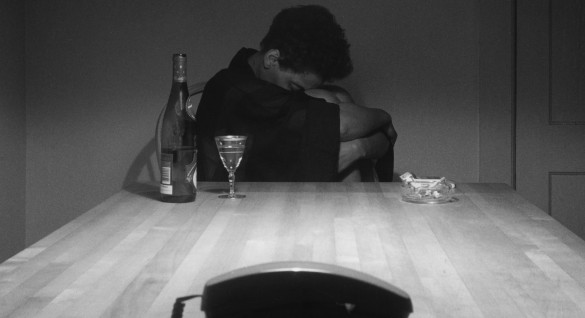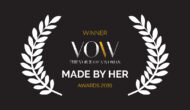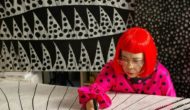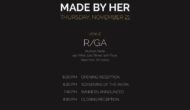CARRIE MAE WEEMS: ARTIST

During the past twenty-five years, I have worked toward developing a complex body of art that has at various times employed photographs, text, fabric, audio, digital images, installation, and, most recently, video. My work has led me to investigate family relationships, gender roles, the histories of racism, sexism, class, and various political systems. Despite the variety of my explorations, throughout it all it has been my contention that my responsibility as an artist is to work, to sing for my supper, to make art, beautiful and powerful, that adds and reveals; to beautify the mess of a messy world, to heal the sick and feed the helpless; to shout bravely from the roof-tops and storm barricaded doors and voice the specifics of our historic moment.
Storytelling is fundamental to my work, a way to best express the human condition that has been a focus of my art from my earliest documentary photographic series, Family Pictures and Stories (1978-1984). This characteristic continued through increasingly complex and layered works such as Ain't Jokin' (1987-1988), Colored People (1989-1990), and the Kitchen Table Series (1990). In these series, I endeavored to intertwine themes as I have found them in life—racial, sexual, and cultural identity and history—and presented them with overtones of humor and sadness, loss and redemption. Throughout the 1990s, I broadened both the geographical scope and the forms of my expression. I explored the African diaspora beginning in America with the Sea Island series (1991-1992). I visited Africa and out of this journey came several series from 1993: Africa, Slave Coast and Landed in Africa. A commission to investigate a body of historical photo-images of blacks from the Getty Museum in 1995 led to an extension of this interest in the diaspora in the series From Here I Saw What Happened and I Cried, a feverishly toned polemic that integrated photograph and text.
In 1997, I began a trilogy of large-scale fabric installations that resulted in Ritual & Revolution (1998), The Jefferson Suite (1999), and The Hampton Project (2000). Each series was a further stage in my drive to make my expression both truer to my own experience of the world and meaningful to a wider audience. Digital technology has enabled me to enlarge my photographs to a scale that allows the viewer to enter physically into the work of art. Each series was a multi-media installation, encompassing digitally produced images on muslin cloth and canvas and an artist-recorded audio piece Ritual & Revolution, commissioned by the Whitney Museum of American Art, explores a world history of humanitarian crises and poses questions related to the agency of artmaking in political terms. The Jefferson Suite, commissioned by the Santa Barbara Museum of Art, investigated unresolved issues of racial and gender identity by examining the ramifications of genetic research and the politics of DNA technologies. The Hampton Project, commissioned by the Williams College Museum of Art, treats issues of race, education, and assimilation through a critical, multi-leveled investigation of the Hampton Institute (now Hampton University) and its methods of instruction for African American and Native American pupils at the turn of the twentieth century. This last series resulted in a monograph co-published by Williams College and Aperture Press.
My most recent investigation, The Louisiana Project, was part of the bicentennial celebrations surrounding the commemoration of the Louisiana Purchase, commissioned by Tulane University’s Newcomb Art Gallery. This project teases out the hidden histories of Louisiana which led to the Mardi Gras, a theatricalized condensation of a web of relationships between black and white, rich and poor, elites and the masses. The installation included photographs, text, video stills, and video. The addition of the moving image in my work represents a shift that allows me to finally negotiate the space between museum culture and popular culture.
Coming Up for Air (2004) was my first video endeavor, first screened at the Museum of Modern Art in New York City. In it I wove together a series of vignettes, separate yet linked, comprised of narrative sequence of photographs, moving footage, and live action. On the surface it may appear that I am moving away from questions of race and gender. However, as a socially engaged artist, I continue to explore these subjects, while turning a poetic eye to the subtle and ephemeral qualities of love: its power to embrace and to destroy.
Carrie Mae Weems
carriemaeweems.net



